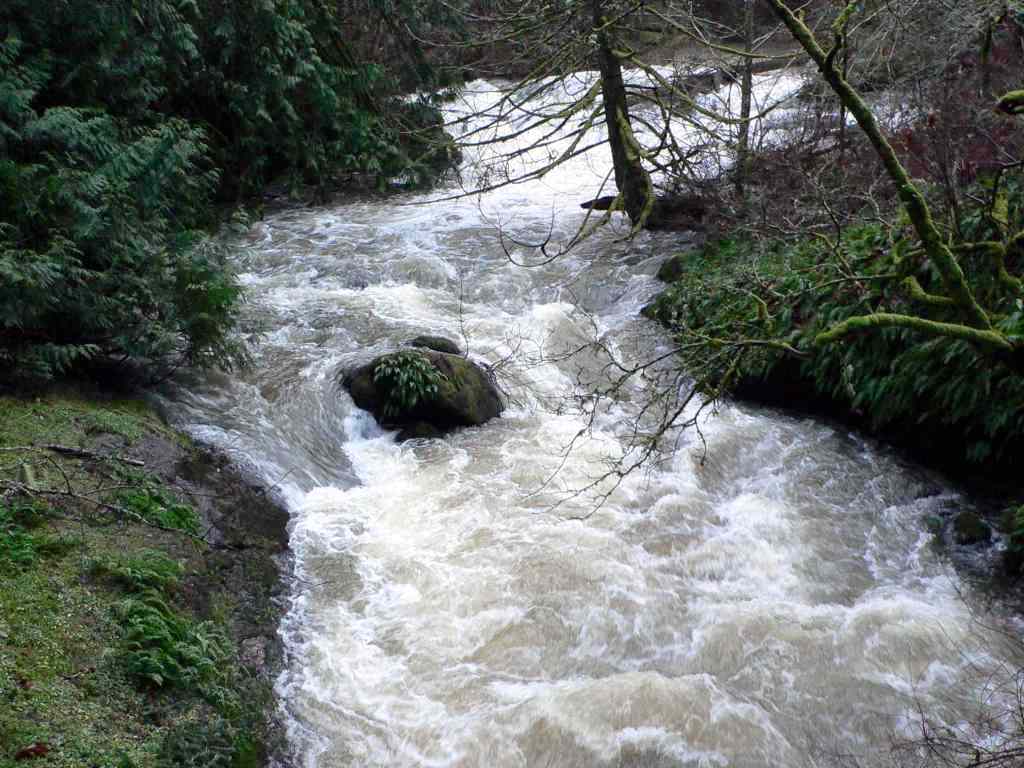Metchosin BioBlitz 2015
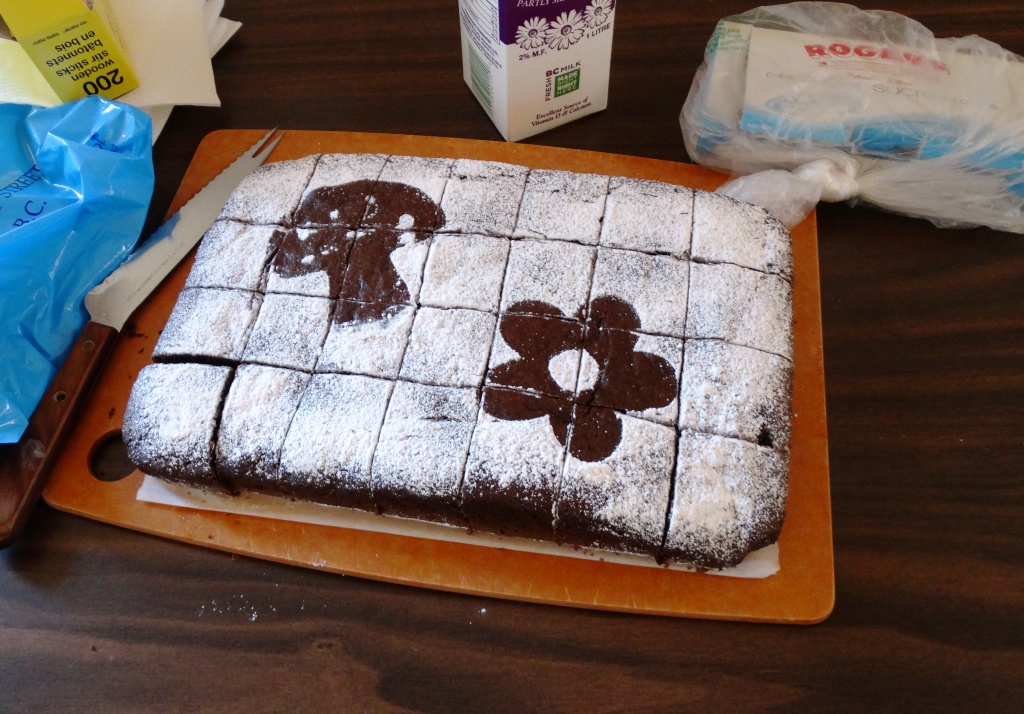 |
| The Metchosin BioBlitz's fifth-birthday cake, baked by Mairi MacKinnon. |
|
|
On Friday evening, June 12, 2015, more than seventy guests crowded into the Metchosin Council chambers to mark a major milestone. They were celebrating the fifth year of the Metchosin BioBlitz, the fifth year of counting the District's non-human species. To commemorate this event, Mairi MacKinnon crafted a one-of-a-kind cake. By the end of the evening, it became an extinct species. |
| The Friday evening event doubled as the June session of Metchosin's popular Talk and Walk series (over 75 talks). Kem Luther did a short summary of BioBlitz results. The evening's main presentation was an illustrated talk by author and naturalist Andy MacKinnon. Andy narrated the complex ways in which fungi cooperate (or not) with plant hosts. Certain plants, known by the jaw-busting, six-syllable term "mycoheterotrophs," have parasitic relationships with fungi. Unable to make their own food—they are non-photosynthetic—they get their food from their fungal partners, who in turn may have gotten the food from other photosynthetic plants in the environment. |
|
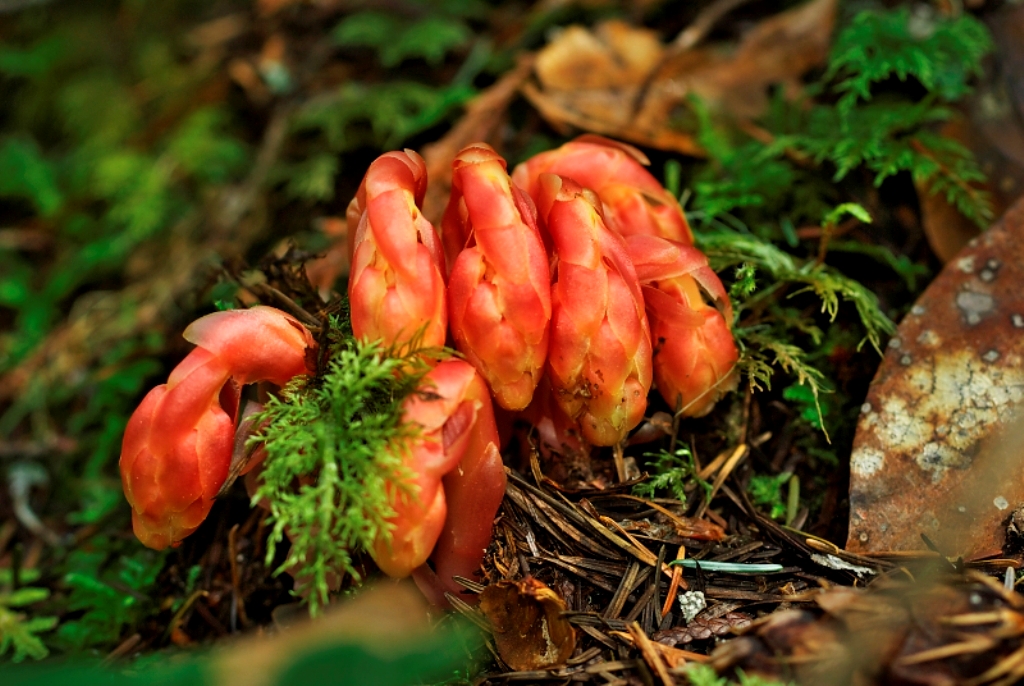 |
Pinesap, Monotropa hypopitys, is a member in a complex mycoheterotrophy that pulls together its own efforts, that of a nearby conifer, and that of a member of the Tricholoma genus of mushrooms. Picture taken by Roger St. Pierre at the 2012 Metchosin BioBlitz.
|
|
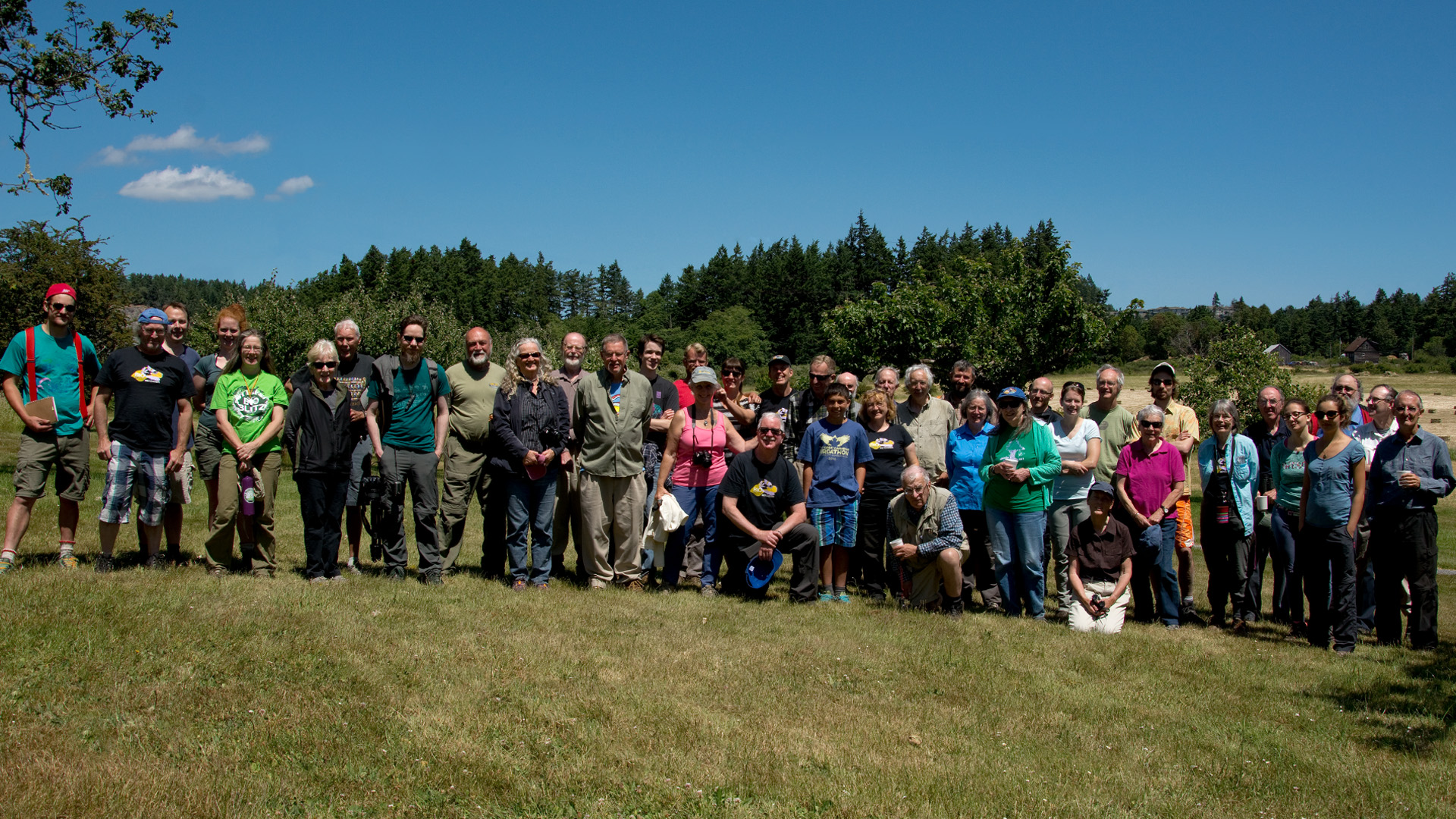 |
| Some of the participants in the 2015 Metchosin BioBlitz. Click on the picture to see an enlarged version. Photo by James Holkko. |
|
|
On Saturday morning the invited bioblitz experts assembled at 8:00 pm at the Boys and Girls Club's Welcome Hut (a big thanks to the Club for the use of its property and buildings) to enjoy hot coffee/tea and six dozen cinnamon buns fresh from Martha Haylor's oven. Some of the birders, coordinated by the omnipresent Ann Nightingale, were outside as soon as it was light enough to see. When everyone had arrived, Andy organized the sixty-plus participants into several teams and assigned them locations for the morning foray. This year the focus of the surveys was on several of the crown land parcels that lie within the borders of Metchosin. |
| BioBlitz searchers returned at noon for fresh assignments. Waiting for them were boxes of pizza donated by My-Chosen Cafe and Pizza, bread and rolls from Cobbs Westshore, vegetable trays from the Langford Costco, and homemade soups prepared by Karyn Woodland, Brian Domney, and Mairi MacKinnon. The experts also picked up their thank-you gifts -- potted native plants from James and Kristin Miskelly's Saanich Native Plants. |
|
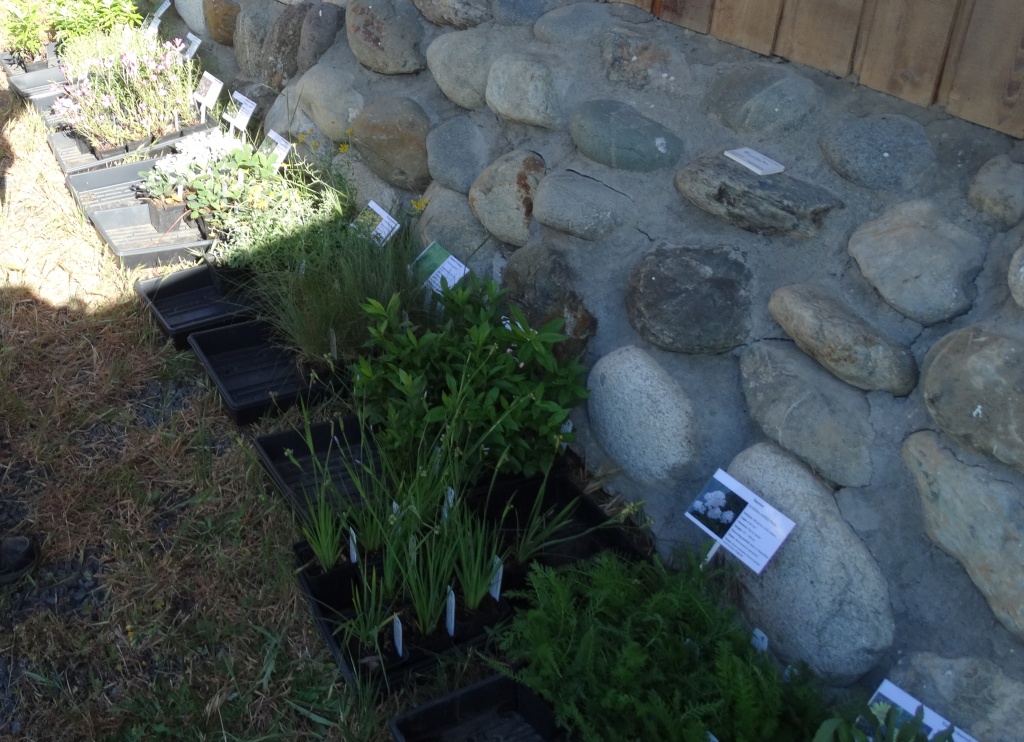 |
| Experts invited to this year's BioBlitz received a special gift: planting-ready native species from Saanich Native Plants to take home. |
|
|
|
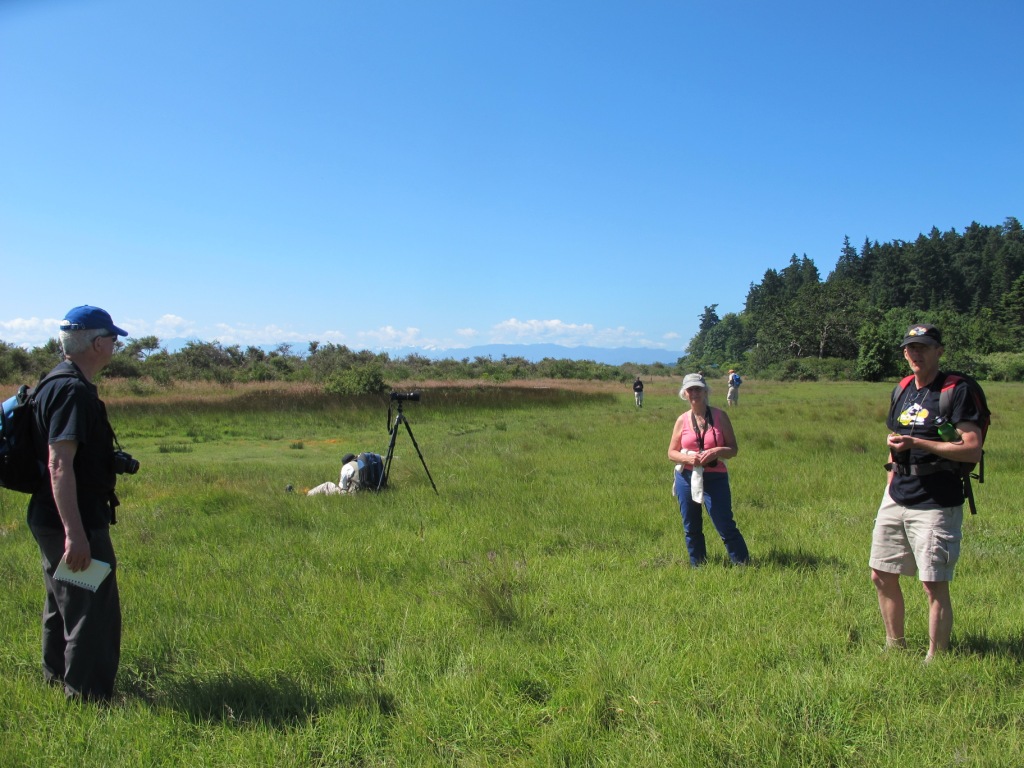 |
| Three members of the Metchosin Biodiversity Project, Andy MacKinnon, Moralea Milne, and Joel Ussery, meet up at Witty's during a morning foray. Photo by Kristin Miskelly. |
|
|
Species searchers returned from the afternoon forays about 4:00 pm. Over cold drinks and sweets donated by the Royal Bay Bakery they swapped stories about the day's results. Some weeks later, when the searcher's reports were in and the numbers were tallied, the BioBlitz organizers found that 900 observations of 540 distinct species had been added to the BioBlitz database. A dozen of these species fell into the provincial "at risk" and "endangered" categories. The 2015 BioBlitz added almost 120 new species to the BioBlitz and MycoBlitz data, bringing the grand total of species for the five years of the study to 2150.
Here are some candid pictures of the BioBlitz teams in action that were captured by the photographers that accompanied the teams.
|
|
|
|
The full list of species found on the forays of the 2015 Metchosin BioBlitz is here, listed alphabetically by scientific name or listed by species group. The authorities against which the scientific names have been verified can be found here.
(Certain small spelling errors in these two lists are corrected in cumulative list below).
A comprehensive list of the nearly 2150 species found in the four BioBlitzes and one MycoBlitz is here.
About a hundred species pictures from the day have been posted to the Photos tab at the left (look for the links that say "BioBlitz 2015").
|
|
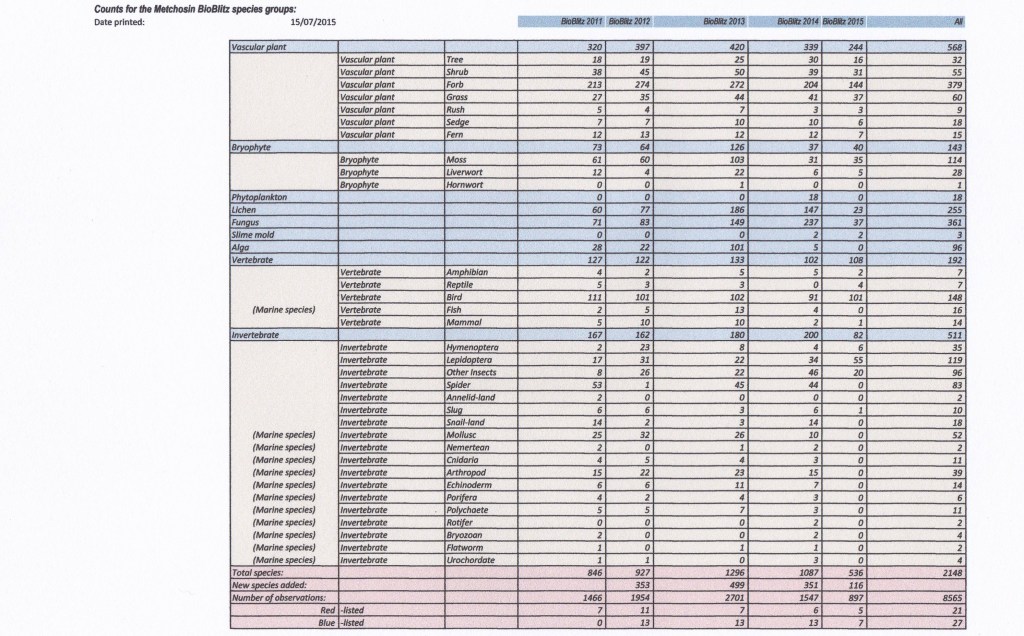 |
| The count totals entered in the BioBlitz database as of 14 July 2015. Click to open an enlarged version of this image in new window/tab. |
|
And now, a glance at six special species that were found at the 2015 BioBlitz (Click on images to open enlarged versions of the pictures in new windows/tabs).
European Wall Lizard, Podarcis muralis
|
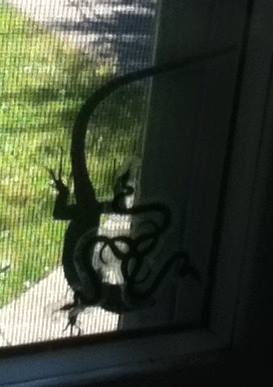
|
| European Wall Lizard. This silhouette picture was taken by Finn Kelly on Rocky Point Road when the lizard crawled between the glass and the screen of a window and posed behind a stick-on design. You can see in the photo the distinctive long toe pads of the European Wall Lizard.
|
One species we were hoping NOT to count on the 2015 BioBlitz was the invasive European Wall Lizard. It's a zoo escape that got a toe-hold on the Saanich peninsula in the 1970s. Since then it has been steadily spreading across the Greater Victoria region. Unfortunately, one of these lizards showed up at Kem Luther's house just before the BioBlitz. On BioBlitz day, a homeowner in the Duke Road area spotted another one. Any new sightings of Wall Lizards should be reported to members of the Metchosin Biodiversity Project or to the BC Museum.
|
|
Ceanothus Silkmoth, Hyalophora euryalus
|

|
|
Ceanothus Silkmoth. Photo taken in 2015 by Kem Luther.
|
|
Thanks largely to the devoted labor of Libby and Rick Avis and Moralea Milne, the 2015 Metchosin BioBlitz harvested a bounty of moth species. Moths, which need warm weather to be active, were out in droves at this year's BioBlitz -- this year was the latest in the spring season that the BioBlitz has been scheduled and this particular spring was advanced by at least two weeks. A record 55 species of moth were captured and identified.
One of the more spectacular of the large moths, found by two groups at the 2015 BioBlitz, is the Ceanothus Silkmoth. Southern Vancouver Island doesn't have the Buckbrush (Ceanothus cuneatus) that gives this moth its common name, but the insect larva is able to make use of a wide range of plants as host, including Alder, Arbutus, and Manzanita. It's wingspan can reach 12 cm (4 inches). |
|
Contorted-pod Evening-primrose, Camissonia contorta |
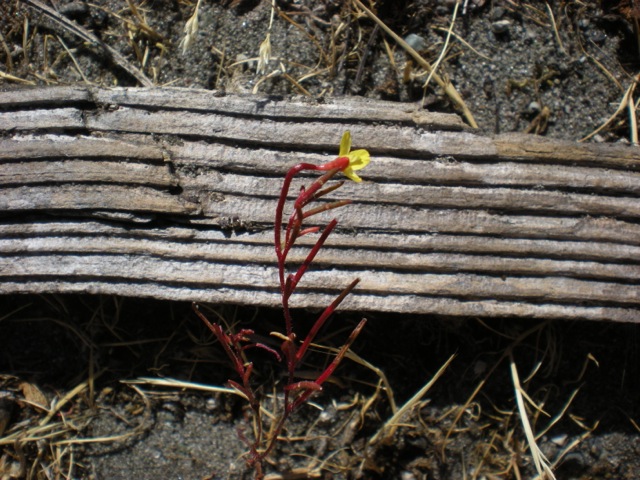
|
|
Contorted-pod Evening-primrose at Witty's Lagoon. Picture by Thor Henrich in June, 2015.
|
|
Metchosin hosts one of the eight remaining Canadian populations of the rare Contorted-pod Evening Primrose, all of which are found on Vancouver Island or nearby islands. This small plant prefers sandy backshore habitats. When it flowers, Contorted-pod Evening-primrose sports four yellow petals on each flower, which gradually fade to red. When the seeds mature, they are housed in a twisted pod that gives the plant its name.
Contorted-pod Evening Primrose was red-listed by SARA in 2007. The greatest threat to the continued presence of the plant along our shores is loss of habitat, a loss often accelerated by invasives such as Scotch Broom. Human recreational activities can also lead to destructive trampling. BioBlitz teams found it at Witty's this year, but if you come across this plant in other places in our District, please report it to the Metchosin Biodiversity Project or to the BC Conservation Data Centre.
|
|
Common Nighthawk, Chordeiles minor |
)
|
|
Common Nighthawk. Photo by Andy Reago & Chrissy McClarren, used under Wikimedia Commons permission.
|
|
The many birders that help with the Metchosin BioBlitzes find, year in and year out, about a hundred different species of birds. But not always the same hundred -- over the five years of the BioBlitz, birders have turned up 150 species. This year the new birds on the list included the Common Nighthawk. A strong flyer that migrates thousands of kilometres from winter home in South America, it often does not show up on Vancouver Island until early June. The late date for this year's spring BioBlitz gave us the opportunity to add this important bird to our list and the birders delivered.
If you want to see this special raptor, you usually need to be out late at night or early in the morning. It is crepuscular and nocturnal, scooping a stream of insects out of the darkening and night skies. Often the only indication that one is around is a distinctive, sharp "peent" call. Listen to it here.
|
|
Scrambled Egg Slime Mold, Fuligo septica |

|
|
Scrambled Egg (or Dog's Vomit) Slime Mold found by a team of 2015 BioBlitzers at Section 28, a trail in the Aquarius subdivision of the District of Metchosin. Photo by Kem Luther.
|
|
The drier the season, the fewer the mushrooms. Our 2015 BioBlitz fungi teams, led yet again by Adolf and Oluna Ceska, still managed to find almost 40 species of fungi. Oluna could probably find a mushroom on the moon, if she could find a way to get there. And she could probably identify it.
Although slime molds are not fungi (we now believe slime molds belong to their own kingdom), fungi researchers often take it on themselves to keep track of them because slime molds, which are neither slime nor molds, can resemble certain fungi and they occur in the same habitats. This year's bioblitzers found two slime molds. The most visually arresting of the two is Fuligo septica, known commonly as Scrambled Egg Slime Mold, or sometimes Dog's Vomit Slime Mold. Like many slime molds, it is a poorly differentiated mass of protoplasm that moves about like a giant amoeba. Unlike many slime molds, it is easy to spot. The bright yellow colour does indeed resemble the disgorged remnants of a dog's bad meal.
|
|
California Broomrape, Orobanche californica |
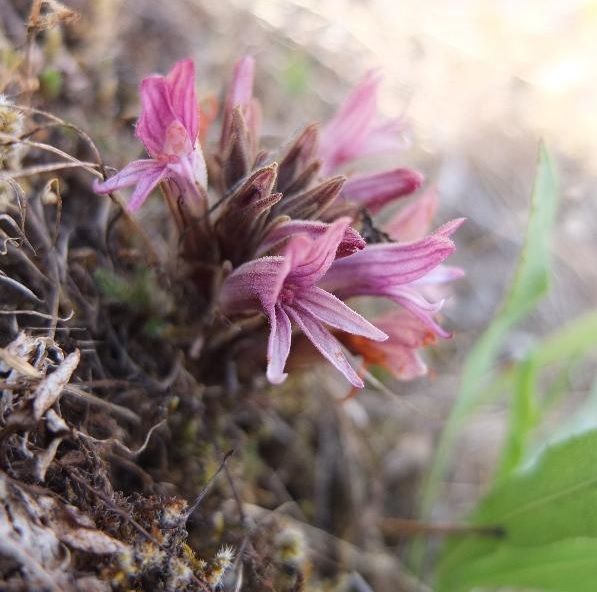
|
|
Flowers of California Broomrape. Photo by Moralea Milne.
|
|
Moralea Milne reported California Broomrape from the property around her Camas Hill home, a first BioBlitz sighting of this unusual plant. It is a close cousin of the Naked Broomrape (Orobanche uniflora) that has been recorded at every BioBlitz. The broomrapes have no photosynthetic organs and are listed as parasites on other plants (in the case of California broomrape, on gumweeds and asters). Interestingly, we have learned that fungi may be involved in the broomrape's direct plant-to-plant relationship.
California broomrape is found in BC and the West Coast states of the U.S. While it can be frequent on the southern tip of Vancouver Island and nearby islands, it is rare in the interior of BC.
|
|
In recent months, a Metchosin Foundation Facebook page has been blogging interesting species sightings around Metchosin. Worth a look.
Finally, a date for your calendars: the third MycoBlitz, Metchosin's annual census of fall fungi, will take place on November 6 and 7, 2015.
The Metchosin Biodiversity Project acknowledges, in addition to the angels mentioned above, the generous financial support of CRD Parks, the Victoria Natural History Society, and the Metchosin Foundation. Thanks also to the District of Metchosin for the use of their facilities and help with insurance coverage.
|
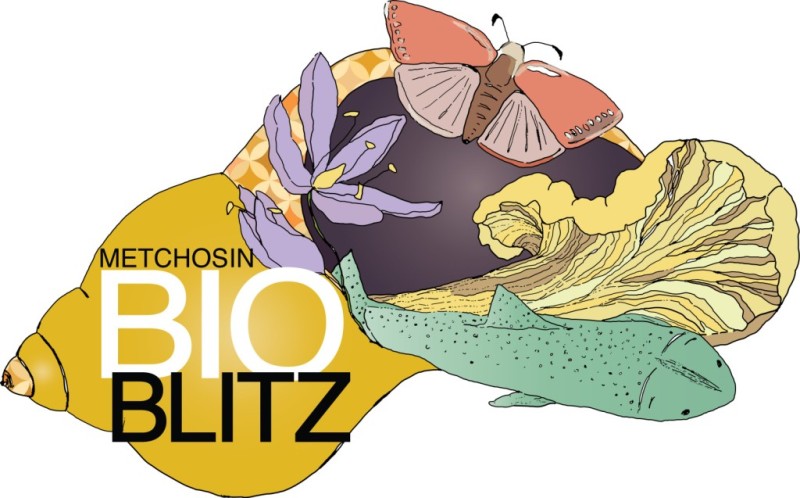
|
|
Artwork by Gala Milne
|
|
